Your cart is currently empty!
Tag: Organizational
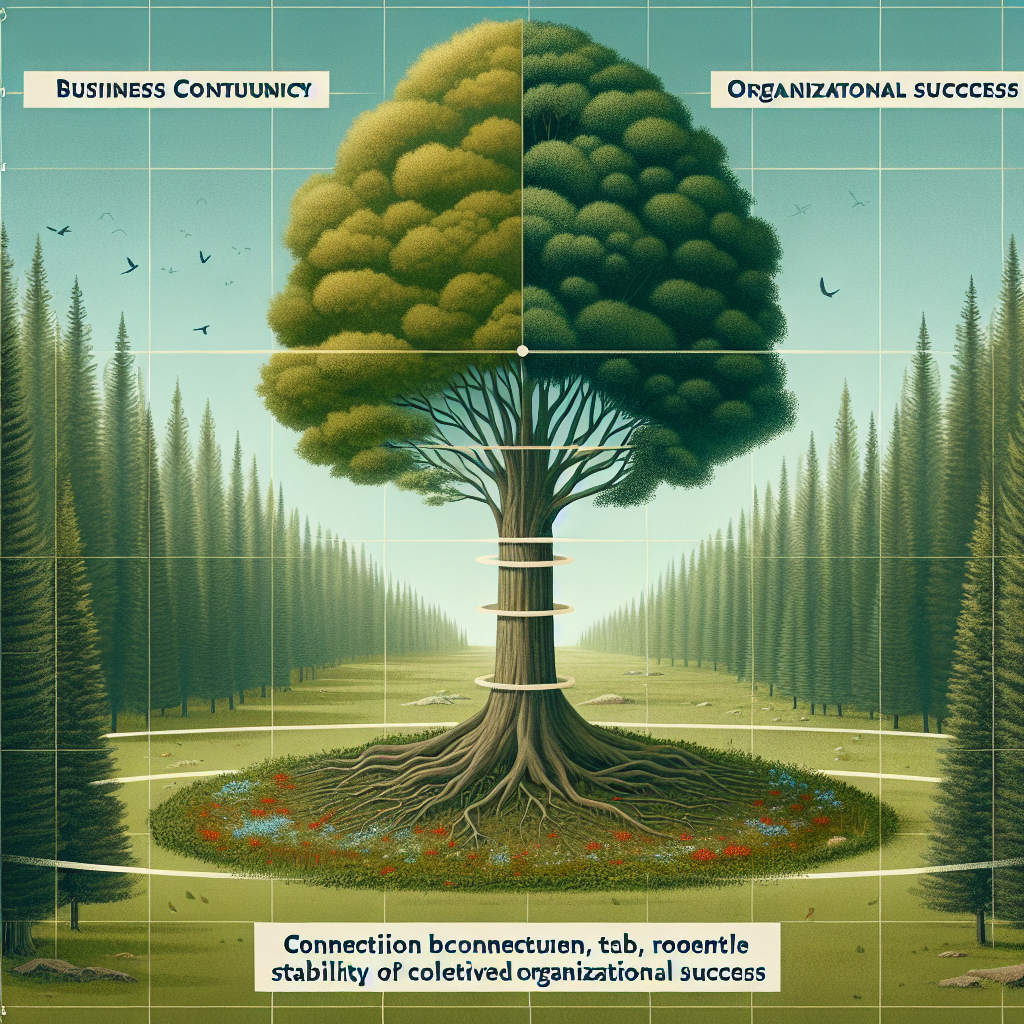
The Link Between Business Continuity and Organizational Success
Business continuity planning is crucial for ensuring that an organization can continue to operate smoothly in the face of unexpected disruptions. From natural disasters to cyberattacks, there are a myriad of threats that can jeopardize a company’s ability to function effectively. By having a comprehensive business continuity plan in place, businesses can minimize the impact of these disruptions and maintain operations during times of crisis.One of the key benefits of business continuity planning is that it helps organizations to identify potential risks and vulnerabilities before they occur. By conducting a thorough risk assessment, companies can pinpoint areas of weakness and develop strategies to mitigate these risks. This proactive approach can help businesses to prevent disruptions from occurring in the first place, or at least minimize their impact when they do occur.
In addition, business continuity planning can help organizations to maintain the trust and confidence of their stakeholders. Whether it’s customers, investors, or employees, stakeholders rely on businesses to deliver products and services consistently and reliably. By demonstrating that they have a plan in place to address potential disruptions, businesses can reassure stakeholders that they are prepared for any eventuality and can continue to meet their needs even in challenging circumstances.
Furthermore, having a robust business continuity plan in place can give organizations a competitive advantage. In today’s fast-paced and interconnected world, disruptions can have far-reaching consequences that can impact a company’s reputation, market share, and bottom line. By being able to maintain operations during times of crisis, businesses can differentiate themselves from their competitors and position themselves as reliable and resilient partners for their customers and suppliers.
Ultimately, the link between business continuity and organizational success is clear. By investing in comprehensive business continuity planning, companies can enhance their resilience, protect their reputation, and maintain their competitive edge. In an uncertain and volatile business environment, having a solid plan in place to address disruptions is essential for ensuring long-term success and sustainability.

Building a Culture of Resilience: How Business Continuity Enhances Organizational Sustainability
In today’s fast-paced and unpredictable business environment, building a culture of resilience is essential for ensuring the long-term sustainability of an organization. Resilience refers to the ability of a business to withstand and recover from disruptions, whether they be natural disasters, cyber-attacks, economic downturns, or other unforeseen events. By implementing a robust business continuity plan, organizations can enhance their resilience and better position themselves to thrive in the face of adversity.One of the key ways in which business continuity enhances organizational sustainability is by helping to minimize the impact of disruptions on operations. By identifying potential risks and developing strategies for mitigating them, businesses can reduce the likelihood of costly downtime and disruption. This not only helps to protect the bottom line, but also enhances the organization’s reputation and credibility with customers, suppliers, and other stakeholders.
In addition to mitigating risks, a strong business continuity plan can also help to improve overall efficiency and effectiveness. By clearly defining roles and responsibilities, establishing communication protocols, and setting clear guidelines for response and recovery, organizations can streamline their operations and ensure a more coordinated and effective response to disruptions. This can help to minimize confusion and chaos in the event of a crisis, and enable the organization to quickly resume normal operations.
Furthermore, building a culture of resilience through business continuity can also help to foster a sense of trust and confidence among employees. When employees know that their organization is prepared for potential disruptions and has a plan in place to address them, they are more likely to feel secure and supported in their roles. This can lead to increased employee morale, productivity, and retention, as well as a greater sense of loyalty and commitment to the organization.
Finally, by building a culture of resilience through business continuity, organizations can also enhance their ability to adapt and innovate in the face of change. Disruptions can often present opportunities for organizations to reassess their strategies, processes, and technologies, and make improvements that can help them to stay ahead of the competition. By embracing a proactive approach to risk management and resilience, organizations can position themselves to not only survive disruptions, but also thrive and grow in the long term.
In conclusion, building a culture of resilience through business continuity is essential for enhancing organizational sustainability in today’s uncertain business environment. By implementing a robust business continuity plan, organizations can minimize the impact of disruptions, improve operational efficiency, foster employee trust and confidence, and enhance their ability to adapt and innovate in the face of change. Ultimately, organizations that prioritize resilience and preparedness are better equipped to weather the storms of uncertainty and emerge stronger and more successful in the long run.

Colts Must Make Organizational Changes In 2025

Source: Kara Durrette / Getty
INDIANAPOLIS – If Jim Irsay is serious about his franchise sniffing the upper quartile again, it’s time for him to stop lying to his fan base.
No, Chris Ballard is not a “blue chip GM,” as the Owner said just weeks prior to the start of the 2024 season.
A “blue chip GM” would not be at the helm of a franchise for 8 years and have a resume saying: 0 division titles, 1 playoff win and have your own franchise in its biggest postseason drought in 3 decades.
The first order of business for Irsay this offseason is to admit enough is enough with Ballard as his general manager.
That’s the first of (at least) 2 moves the Colts need to make this offseason.
Continuing with Ballard, an archaic roster blueprint and the preaching of culture at every turn has not led to anywhere near the desired results.
In 8 years under Ballard, the Colts have finished in the 16-team AFC in the following places: 13th, 6th, 10th, 7th, 8th, 15th, 9th, 10th (with 1 week left in the 2024 season).
To use a favorite metric of Ballard, the GM has often pointed to point differential as an accurate NFL measuring stick.
Well, the Colts are 18th in that area during his 8-year run as GM (10th in the AFC this year and 22nd in the NFL). The Colts have just 3 wins by multiple scores in the last two years, which ranks 29th in the NFL.
Ballard’s refusal to believe some positions garner more importance than others as bit him.
He waited far too long on a non band-aid move at quarterback, drafted just 3 wide receivers in his first 3 drafts (Daurice Fountain, Deon Cain, Parris Campbell) as T.Y. Hilton’s career came to a halt, wasn’t proactive enough at left tackle as Anthony Castonzo flirted with retirement, swung and missed routinely at edge rusher and cornerback with early picks.
Overall draft stress with a reluctance to use free agency has led to too many gaps on the roster. Continuity has been preached while the results have not warranted such a constant belief.
The culture focus has been an odd one to quantify.
Would a team with a heavy emphasis on culture have a pair of players suspended for multiple games last December during a playoff push?
Would such a culture allow for a young, inexperienced beyond belief, quarterback not realize what the professional standard is as a captain in the National Football League?
Honestly, the Ballard tenure should have ended after the 2022 season, but a contract extension signed in 2021 (through 2026) played a role on Irsay wanting to give another chance to a man the Owner has publicly praised like no other, despite results telling an entirely different story.
Add it all up, and the Colts have watched 25 other teams win a division title, including every team in the AFC South winning multiple ones, since the Colts last did.
A total of 21 teams have won a playoff game since the Colts last did some 6 years ago.
Saturday is the 10-year anniversary of the Colts last hosting a home playoff game.
Is Irsay ready to admit his GM doesn’t deserve a 9th crack at this?
The other change the Colts need to make as the calendar moves to 2025 comes on the defensive side of the ball, where Ballard has had ample say during his time.
Ballard has long been a believer in the 4-man fronts used by Matt Eberflus and now Gus Bradley.
The Colts have been very content with simpler defensive schemes.
Well, the results have been hardly anything resembling a playoff caliber defense, especially under Bradley.
In 3 years under Bradley, the Colts have ranked 29th, 29th and (currently) 27th in points allowed per game.
The Colts are the worst tackling team in the NFL under Bradley by a wide margin, and have allowed endless career days in 2024.
Joe Mixon (most rushing yards in 3 years) and Josh Jacobs (most rushing yards in 2 years) started it in Weeks 1 and 2.
A mightily struggling Trevor Lawrence hit the Colts for a career-day in Week 5.
The lowly Jets scored their most points of the season against the Colts. The lowlier Giants scored their most points in 9 years against the Colts. And let’s not forget the Patriots, currently holding the No. 1 overall pick, falling just a point short of their season-high against Bradley’s Colts.
An overall acceptance of “bend but don’t break” often flips field position, if nothing else, putting the offense into some less than favorable situations.
Even Steichen would admit the challenge of facing a Bradley-style defense is nowhere near as taxing.
On Monday, Steichen asked what he likes about a Bradley defensive system, with the two parties having history together dating back to their days with the Chargers.
“Like I said, he’s been doing it for a long time,” the head coach began. “He brings great energy to those players. I’ve known Gus over the years. His system, the way he teaches it, obviously things haven’t been perfect, we all know that. They haven’t been perfect on offense. They haven’t been perfect on a lot of areas. But, yeah, we will go through that, look at the system, look at the scheme and have those conversations at the end of the year.”
Clearly, there’s not a lot of ringing conviction for what Bradley is providing the Colts systematically.
Personnel questions need to be had defensively, too, but the overall system is way too stale for modern-day NFL.
Simply, a 4th year of Bradley is not needed, and this is why I questioned his retention last offseason, too.
Debates about canning Shane Steichen (under contract through 2028) and pulling the plug on Anthony Richardson are inevitable, particularly if Irsay believes a GM change is needed.
For me though, Ballard and Bradley are the biggest current culprits.
That’s where things need to start for the organization to tell their fan base they actually care about being elite again, and not being so willing to accept mediocrity.
As we head into the 2025 NFL season, it’s becoming increasingly clear that the Indianapolis Colts must make some significant organizational changes in order to stay competitive in the league. Despite having a talented roster and a successful history, the Colts have struggled to make a deep playoff run in recent years.One of the most pressing issues facing the Colts is the need for a new head coach. Frank Reich, who has been at the helm since 2018, has failed to lead the team to consistent success. The Colts must look for a coach who can bring a fresh perspective and instill a winning culture within the organization.
In addition to a coaching change, the Colts also need to address their front office. General manager Chris Ballard has made some questionable decisions in recent years, particularly in terms of player acquisitions and contract negotiations. The Colts must bring in a strong, experienced executive who can make shrewd personnel moves and set the team up for long-term success.
Furthermore, the Colts need to prioritize player development and talent acquisition. While they have some key pieces in place, such as star quarterback Carson Wentz and standout defensive lineman DeForest Buckner, the team lacks depth and consistency at several positions. The Colts must invest in scouting, drafting, and player development to build a strong, competitive roster.
Overall, the Colts must make organizational changes in 2025 in order to elevate their performance and compete at the highest level. By making strategic coaching hires, front office adjustments, and player development investments, the Colts can position themselves for success in the future. It’s time for the Colts to take bold steps to revitalize their organization and reclaim their status as a top contender in the NFL.
Tags:
- Indianapolis Colts organizational changes
- NFL team reorganization
- Colts front office shakeup
- 2025 Indianapolis Colts transitions
- Improving Colts management
- Indianapolis Colts roster adjustments
- NFL team restructuring
- Colts leadership overhaul
- Colts management revamp
- Indianapolis Colts future plans
#Colts #Organizational

Digital Technology and Organizational Change: Reshaping Technology, People, and

Digital Technology and Organizational Change: Reshaping Technology, People, and
Price : 135.37
Ends on : N/A
View on eBay
ProcessesIn today’s rapidly evolving digital landscape, organizations are constantly faced with the challenge of adapting to new technologies and changing market demands. Digital technology has not only revolutionized the way we work, but also the way we communicate, collaborate, and innovate.
One of the key drivers of organizational change in the digital age is the need to reshape technology, people, and processes to stay competitive and relevant in the market. This involves updating legacy systems, implementing new tools and platforms, and fostering a culture of continuous learning and innovation.
Technology plays a crucial role in driving organizational change, as it enables companies to streamline operations, improve efficiency, and enhance customer experience. From cloud computing and artificial intelligence to data analytics and automation, digital technologies have the potential to revolutionize how businesses operate and deliver value to their customers.
However, technology alone is not enough to drive meaningful change within an organization. People are also a critical factor in the success of digital transformation initiatives. Companies need to invest in training and upskilling their employees to ensure they have the necessary skills and knowledge to leverage new technologies effectively.
In addition to reshaping technology and people, organizations must also revisit their processes and workflows to ensure they are aligned with the digital age. This may involve reengineering business processes, adopting agile methodologies, and fostering a culture of collaboration and innovation.
Ultimately, digital technology and organizational change go hand in hand, as companies must continually adapt and evolve to stay ahead of the curve. By reshaping technology, people, and processes, organizations can position themselves for long-term success in an increasingly digital world.
#Digital #Technology #Organizational #Change #Reshaping #Technology #People, Data Management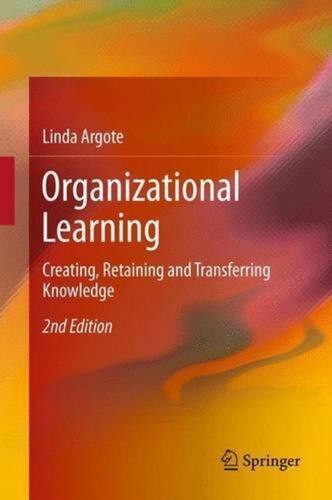
Organizational Learning: Creating, Retaining and Transferring Knowledge by Linda

Organizational Learning: Creating, Retaining and Transferring Knowledge by Linda
Price : 260.51
Ends on : N/A
View on eBay
Organizational Learning: Creating, Retaining and Transferring KnowledgeIn today’s fast-paced and ever-changing business environment, the ability to learn and adapt quickly is crucial for organizations to stay competitive. Organizational learning is the process of acquiring, creating, retaining, and transferring knowledge within an organization to improve performance and achieve strategic goals.
Creating knowledge involves generating new ideas, insights, and solutions through research, experimentation, and collaboration. This can be done through formal processes such as training programs, workshops, and brainstorming sessions, as well as informal channels like team meetings, discussions, and networking.
Retaining knowledge is essential for organizations to build a knowledge base that can be accessed and used by employees across different departments and levels. This can be achieved by documenting best practices, lessons learned, and success stories, as well as creating a culture that values and encourages knowledge sharing and collaboration.
Transferring knowledge involves disseminating information and expertise from one part of the organization to another, or from one employee to another. This can be done through formal channels such as training programs, mentorship initiatives, and knowledge management systems, as well as informal methods like shadowing, coaching, and peer-to-peer learning.
By investing in organizational learning, companies can foster a culture of continuous improvement, innovation, and adaptability. This not only helps employees stay engaged and motivated, but also enables organizations to respond effectively to changing market conditions, emerging technologies, and evolving customer needs.
In conclusion, organizational learning is a key driver of success in today’s knowledge-based economy. By creating, retaining, and transferring knowledge effectively, organizations can build a competitive advantage, enhance performance, and achieve sustainable growth in the long run.
#Organizational #Learning #Creating #Retaining #Transferring #Knowledge #Linda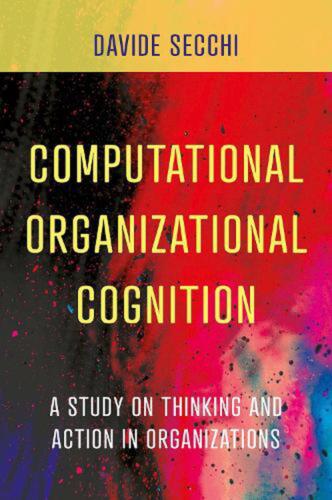
Computational Organizational Cognition: A study on thinking and action in organi

Computational Organizational Cognition: A study on thinking and action in organi
Price : 90.81
Ends on : N/A
View on eBay
zationsIn recent years, the study of organizational cognition has gained significant attention in the field of management and organizational behavior. Researchers have been exploring how organizations think, process information, and make decisions in order to better understand their behavior and performance.
One key aspect of organizational cognition is computational thinking, which involves the use of algorithms, models, and simulations to analyze complex problems and make informed decisions. This approach allows organizations to leverage data and technology in order to optimize their processes and strategies.
In our study, we aim to explore the role of computational organizational cognition in shaping thinking and action within organizations. By examining how different types of computational tools and techniques are used in organizational decision-making processes, we hope to uncover the underlying mechanisms that drive organizational behavior and performance.
Our research will involve analyzing case studies, conducting surveys, and interviews with organizational leaders and employees to gain insights into how computational thinking is integrated into everyday practices. We will also explore the impact of computational organizational cognition on organizational learning, innovation, and strategic decision-making.
Overall, our study aims to shed light on the importance of computational thinking in shaping organizational behavior and performance. By understanding how organizations think and act in a computational way, we can identify opportunities for improving efficiency, effectiveness, and overall success in the ever-evolving business landscape.
#Computational #Organizational #Cognition #study #thinking #action #organi
AI and Data Analytics Applications in Organizational Management by Tereza Raq…

AI and Data Analytics Applications in Organizational Management by Tereza Raq…
Price : 272.29
Ends on : N/A
View on eBay
AI and Data Analytics Applications in Organizational ManagementIn today’s fast-paced business environment, organizations are constantly looking for ways to gain a competitive edge. One of the most powerful tools at their disposal is artificial intelligence (AI) and data analytics. These technologies have the potential to revolutionize the way organizations operate, making them more efficient, productive, and profitable.
AI and data analytics can be used in a wide range of applications within organizational management. For example, AI-powered chatbots can help streamline customer service operations, allowing organizations to respond to customer inquiries more quickly and efficiently. Data analytics can be used to identify trends and patterns in customer behavior, helping organizations tailor their marketing strategies to better meet the needs and preferences of their target audience.
In addition, AI and data analytics can be used to optimize supply chain management, forecasting demand and identifying potential risks before they become major issues. By analyzing large volumes of data, organizations can make more informed decisions about inventory levels, transportation routes, and supplier relationships.
Overall, the potential applications of AI and data analytics in organizational management are vast and varied. By leveraging these technologies, organizations can gain valuable insights into their operations, improve efficiency, and drive growth. It is clear that AI and data analytics will play a crucial role in shaping the future of organizational management.
#Data #Analytics #Applications #Organizational #Management #Tereza #Raq.., Data Management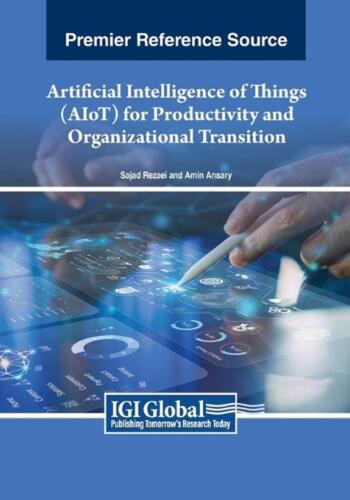
Artificial Intelligence of Things (AIoT) for Productivity and Organizational Tra

Artificial Intelligence of Things (AIoT) for Productivity and Organizational Tra
Price : 254.72
Ends on : N/A
View on eBay
nsformationArtificial Intelligence of Things (AIoT) is a powerful combination of two cutting-edge technologies – artificial intelligence (AI) and the Internet of Things (IoT). By integrating AI capabilities into IoT devices and systems, organizations can unlock new levels of productivity and efficiency, leading to transformative changes in how businesses operate.
One of the key benefits of AIoT is its ability to automate and optimize processes, reducing the need for manual intervention and streamlining operations. AI algorithms can analyze vast amounts of data generated by IoT devices in real-time, identifying patterns and trends that humans may overlook. This allows organizations to make data-driven decisions quickly and accurately, leading to improved productivity and performance.
AIoT also enables predictive maintenance, where IoT sensors collect data on equipment performance and AI algorithms analyze this data to predict when maintenance is needed before a breakdown occurs. This proactive approach can prevent costly downtime and extend the lifespan of assets, ultimately saving organizations time and money.
Furthermore, AIoT can enhance customer experiences by personalizing interactions based on data collected from IoT devices. For example, retailers can use AI algorithms to analyze customer preferences and behavior to offer tailored product recommendations, leading to increased customer satisfaction and loyalty.
In conclusion, AIoT has the potential to revolutionize how organizations operate, driving productivity gains and organizational transformation. By leveraging the power of AI and IoT together, businesses can stay ahead of the competition and unlock new opportunities for growth and innovation.
#Artificial #Intelligence #AIoT #Productivity #Organizational #Tra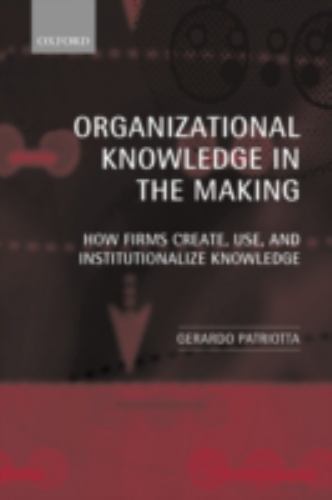
ORGANIZATIONAL KNOWLEDGE IN THE MAKING: HOW FIRMS CREATE, By Gerardo Patriotta

ORGANIZATIONAL KNOWLEDGE IN THE MAKING: HOW FIRMS CREATE, By Gerardo Patriotta
Price : 19.49
Ends on : N/A
View on eBay
ORGANIZATIONAL KNOWLEDGE IN THE MAKING: HOW FIRMS CREATE, By Gerardo PatriottaIn his groundbreaking book, “Organizational Knowledge in the Making: How Firms Create,” Gerardo Patriotta delves into the complex world of knowledge creation within organizations. Patriotta challenges traditional views of knowledge as a static and easily transferable commodity, arguing instead that knowledge is dynamic, constantly evolving, and deeply rooted in the social and cultural context of the organization.
Drawing on extensive research and case studies, Patriotta explores the processes through which firms create and maintain knowledge. He highlights the importance of social interactions, communication, and collaboration in the knowledge creation process, emphasizing the role of individuals within organizations in shaping and sharing knowledge.
Patriotta’s work sheds light on the ways in which organizations can foster a culture of learning and innovation, enabling them to adapt to changing environments and stay ahead of the competition. By understanding how knowledge is created and shared within their organizations, leaders can better harness the collective intelligence of their teams and drive sustainable growth and success.
“Organizational Knowledge in the Making” is a must-read for anyone interested in the dynamics of knowledge creation and organizational learning. Patriotta’s insights offer valuable guidance for leaders and managers seeking to cultivate a culture of innovation and continuous improvement within their organizations.
#ORGANIZATIONAL #KNOWLEDGE #MAKING #FIRMS #CREATE #Gerardo #Patriotta, Data Management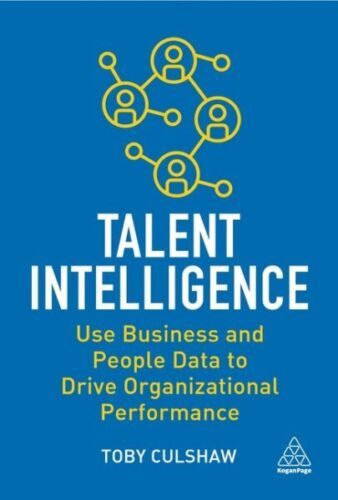
Talent Intelligence : Use Business and People Data to Drive Organizational Pe…

Talent Intelligence : Use Business and People Data to Drive Organizational Pe…
Price :41.99– 40.16
Ends on : N/A
View on eBay
Talent Intelligence: Use Business and People Data to Drive Organizational PerformanceIn today’s rapidly evolving business landscape, organizations are increasingly turning to talent intelligence to gain a competitive edge. Talent intelligence is the practice of using a combination of business and people data to inform strategic decision-making and drive organizational performance.
By leveraging data analytics and insights, organizations can better understand their workforce, identify areas for improvement, and make more informed decisions when it comes to hiring, training, and retaining top talent. With the right talent intelligence strategy in place, organizations can not only attract and retain the best employees, but also optimize their overall performance and productivity.
In a world where data is king, talent intelligence is a powerful tool that can help organizations stay ahead of the curve. By harnessing the power of business and people data, organizations can unlock valuable insights that can drive growth, innovation, and success.
So, if you want to take your organization to the next level, consider implementing a talent intelligence strategy. By using data to inform your decisions and drive performance, you can ensure that your organization is equipped to thrive in today’s competitive business environment.
#Talent #Intelligence #Business #People #Data #Drive #Organizational #Pe.., Data Management
